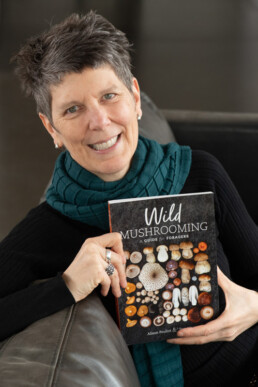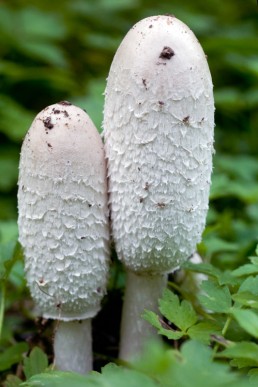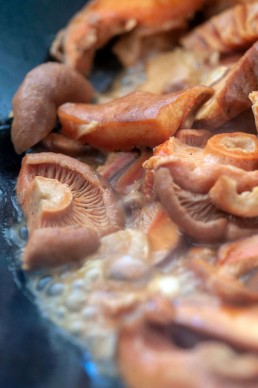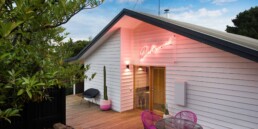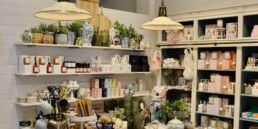With autumn in full force, a great diversity of fungi – some deadly and some desirable – are thrusting themselves through the earth.
With fungi being incredibly diverse, delicious (and sometimes deadly) a new book from CSIRO Publishing – Wild Mushrooming: A Guide for Foragers – delivers expert advice on best ways to go about finding, identifying and collecting the right mushrooms … as well as a mouth-watering selection of recipes to enjoy too. The book is co-authored by leading experts Alison Pouliot and Tom May and has been a collaborative project five years in the making. It includes sections on where, when, and how to find fungi and guides the forager in the identification of a selection of edible species.
Foraging for edible mushrooms is gaining popularity in Australia. With their earthy fragrances of wet forest, mushrooms truly capture the essence of the cooler months. However, those who fancy collecting a few mushies for dinner should take heed. Dangerously poisonous species lurk among the edibles that could land you in hospital or even in the grave. Telling them apart takes time and experience. Those foraging for edible fungi must be able to identify toxic lookalike species, especially the infamous death cap, Amanita phalloides.
Novice foragers should begin with more easily recognisable edible species such as the saffron milkcap, (Lactarius deliciosus), the slippery jack (Suillus luteus and S. granulatus) and the lawyer’s wig (Coprinus comatus). Each has its own particular features that need to be understood and recognised to make accurate identifications. Also, be aware that edible fungi cannot be identified from photos alone.
Saffron milkcaps (Lactarius deliciosus) grow in association with pines. Foragers in the region typically head to Pinus radiata plantations where they grow in great abundance.
The lawyer’s wig (Coprinus comatus) is so-called because of its tufted cap that resembles…you guessed it…a lawyer’s wig. Also known as an inkcap, this species produces copious quantities of black spores that resemble black ink as it deliquesces. They commonly pop up in lawns and disturbed areas such as track edges.
Slippery jacks are often found alongside saffron milk caps in pine plantations.
Keep in mind that dozens of native mammals such as wallabies and potoroos rely on fungi as food. Fungi are generally fairly indigestible to humans; hence we’re best just to eat them in small quantities. If you’re collecting edible fungi, remember only to take what you’ll eat that day and leave plenty for our native fauna.
Although the world is currently in lockdown, the fungi are running riot out there in the forest. The recent rains could mean we are in for a bumper mushroom season, but please forage within the constraints of the current isolation rules and remember that foraging is not permitted on public land.
Each year ecologist and environmental photographer, Alison Pouliot, runs forays and workshops to show people how to identify fungi and this year they are happening online.
Article revised March 2021
Words and Photography: © Alison Pouliot
Wild Mushrooming: A Guide for Foragers by Alison Pouliot & Tom May Released: Mar 2021 $49.99 PB 320 pp ISBN: 978148311736
Available from all good bookstores or order online at: publish.csiro.au/book/7894
About the author

Alison Pouliot
Alison Pouliotis an ecologist and environmental photographer with a focus on fungi. She is active in Australian and international fungal conservation and her writing and images appear in both academic and popular literature. Alison’s fungus forays, which she conducts across both hemispheres, attract a range of people from foragers and philosophers to rangers and traditional owners.
- This author does not have any more posts.
Share this article
While You're Here
Top Dishes From our Hatted Restaurants
When The Age Good Food Guide 2023 awards were handed out, the Daylesford and Macedon Ranges region…
Hello Dollywood: An Interview with Megan Gale
Daylesford is all a flutter, pleased to have Megan Gale and Shaun Hampson as new owners of…
What’s New in the Daylesford Macedon Ranges: Spring 2020
Our plot thickens. An eclectic mix of new businesses have been sprouting around the Daylesford &…
Off the Grid
Set in the Wombat State Forest, Blackwood Ridge is a small boutique plant nursery featuring a…
Interview with Annie Smithers
Blessed with rich volcanic soil and world-class produce, the Daylesford and Macedon Ranges region…
A Week in the Life: Guide to a 7-Night Stay
A weekend is never long enough in the Daylesford and Macedon Ranges region, so stay for a little…


